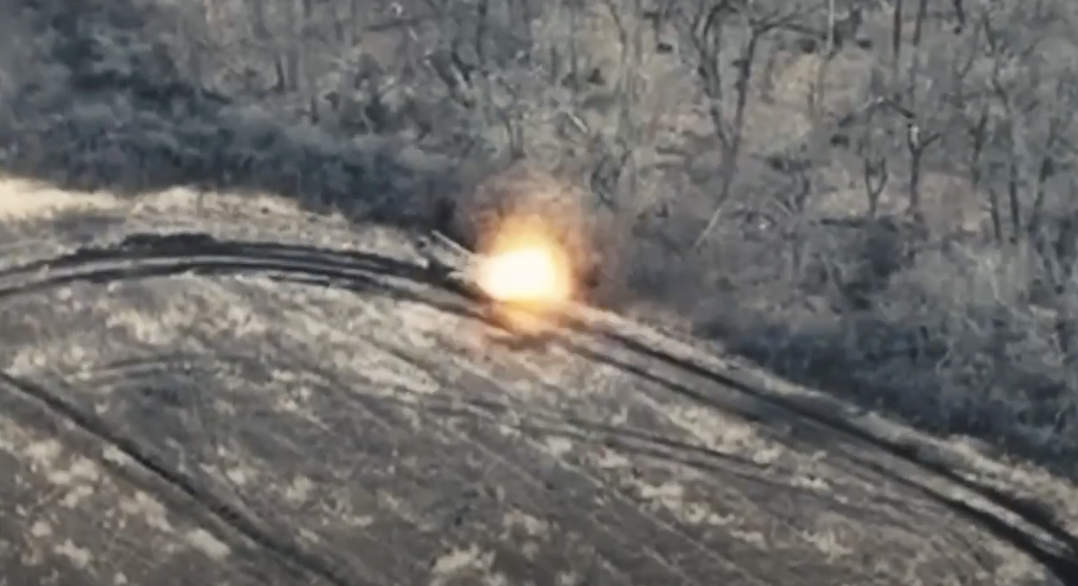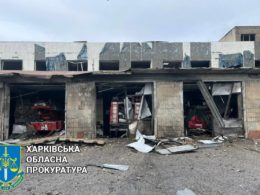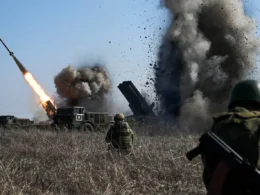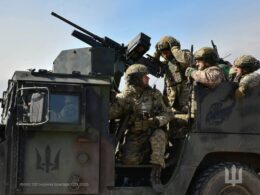In the ongoing war between Russia and Ukraine, Ukrainian forces have turned to an innovative and cost-effective weapon to counter the might of Russian tanks: first-person-view (FPV) drones. According to a NATO official, these drones have been responsible for destroying more than two-thirds of Russian tanks in recent months, Foreign Policy reports. As Ukraine waits for additional artillery ammunition from the United States and other Western allies, the reliance on these drones has become increasingly significant.
FPV drones, operated by controllers and equipped with video feeds, allow Ukrainian troops to execute precise "suicide" attacks on Russian vehicles. These drones, often carrying over 10 pounds of explosives, have become a common sight on the Ukrainian battlefield. The footage of their attacks is regularly shared on social media platforms, highlighting their effectiveness in the war.
However, experts caution that these drones are not a long-term solution to Ukraine's artillery shortage. While inexpensive and widely available, with prices as low as $400, FPV drones come with their own set of limitations. Their cheap cameras can hinder accuracy in low-light conditions, and their improvised munitions sometimes fail to detonate. Despite these challenges, the drones have proven to be a valuable asset in Ukraine's defense strategy.
The use of FPV drones has forced Russia to adapt, covering its tanks with camouflage and jamming equipment to counter the aerial threat. Yet, the success of these drones has put pressure on Russia's armored vehicle reserves, potentially impacting its ability to conduct future offensive operations.
As the war continues, Ukraine is also exploring other innovative defense measures, such as using microphone networks to detect incoming targets and rigging heavy machines with sensors to shoot down enemy drones. Despite these efforts, Ukrainian officials emphasize the irreplaceable role of artillery in warfare, highlighting the ongoing need for Western military aid.
In response to the escalating war with Russia, Ukraine has significantly ramped up its production and utilization of drones, particularly FPV drones. These drones have become a crucial asset on the battlefield, providing a cost-effective means of conducting reconnaissance and launching attacks on enemy positions.
As of November 2023, Ukraine has made substantial progress in developing its own drone technology. The country now boasts 40 Ukrainian-made drones approved for combat use, with seven manufacturers receiving contracts to supply over 10,000 attack drones. Among the notable models is the R-18 octocopter bomber, capable of carrying explosives and equipped with thermal imaging for precision strikes. Another example is the Baba Yaga drone, known for its ability to operate autonomously and deliver powerful payloads.
Despite these advancements, Ukraine faces challenges in keeping pace with drone production, particularly when compared to Russia. The country currently produces about 50,000 FPV drones per month, but this falls short of the army's requirement of 200,000 drones. The production gap is partly due to a shortage of engineers, with an estimated additional 5,000 needed to meet demand. To address this, Ukraine is actively working to increase its production capacity and train more specialists in drone technology.
Ukraine's drone strategy extends beyond FPV drones. The country has also been innovative in the use of maritime drones, which have been employed to disrupt Russian positions in the Black Sea and target key infrastructure such as the Crimean bridge. These naval drones, known for their speed, range, and payload capacity, have proven to be a formidable tool in Ukraine's arsenal, challenging Russia's naval dominance in the region.
Related:
- Inside Ukrainian campaign to crush Russia with combat drones
- War of drones: can Ukraine keep its asymmetric advantage?
- Ukraine's secret FPV drone labs race to stay ahead of Russia
- How Ukraine's scrappy marine drones are revolutionizing naval warfare
- Ukraine's FPV drone production nearly sixfold behind Russia's amidst engineers shortage
- Ukraine builds its own weapons to fight Russia





